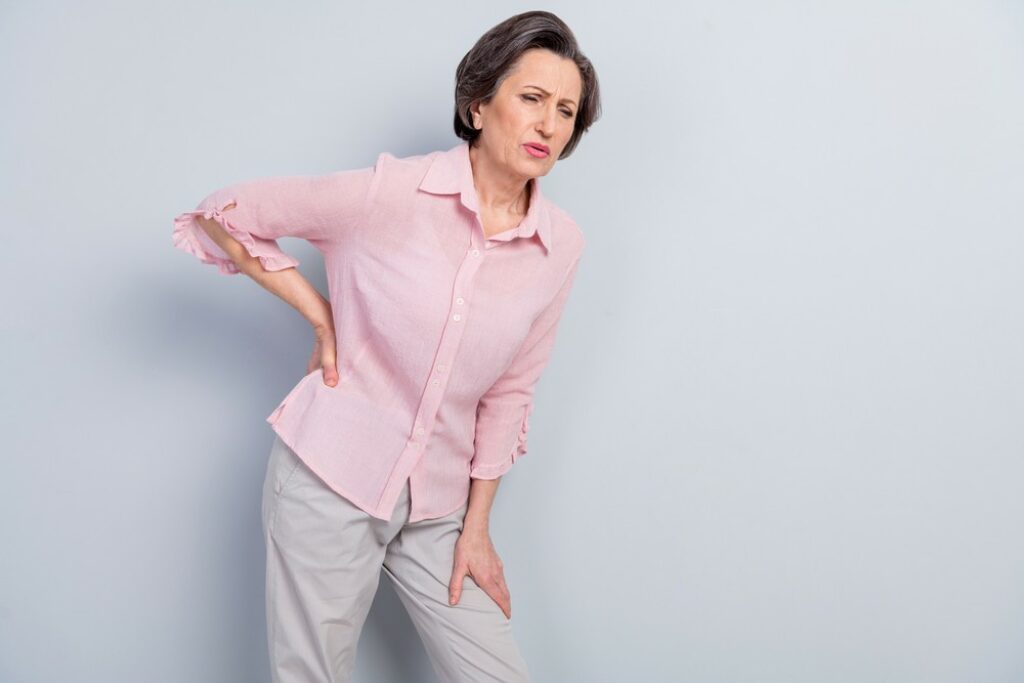
Common Symptoms of Osteoporosis
The skeleton serves three very important purposes – It gives the body shape, protects vital organs and works in conjunction with muscles to enable movement. But when our bones do not receive enough calcium and other essential nutrients, this can lead to a condition known as Osteoporosis.
Related Topics (Sponsored Ads):
Osteoporosis, or Osteo for short, is a serious bone disease characterized by low bone mass and deterioration of bone tissue, leading to an increased risk of fractures. A worrisome trait of this disease is that it often progresses silently, with no noticeable symptoms until a fracture occurs. This means that years can go by before it’s discovered. Therefore, it’s prudent to understand the symptoms of this degenerative disease for early detection and effective management.
Listed below are the most common symptoms, risk factors, and available treatments for osteoporosis.

Susceptibility To Bone Fractures
The primary symptom of osteoporosis is an increased susceptibility to bone fractures, due to the loss of density and durability. Fractures can occur in various locations, but the most common areas include the spine, hip, and wrist. These fractures can happen even from minor falls or injuries that would not typically cause a fracture in a person with strong, healthy bones. This bone fragility makes it risky and dangerous for an individual with Osteo to partake in various activities, and causes severe injuries in the event of a road accident.
Chronic Back Pain
Osteoporosis-related fractures in the spine can lead to chronic back pain. This pain can be localized in one area or it may spread across the entire back. It may worsen with movement or tasks that involve bending, lifting, or twisting. Moderate – severe back pain can significantly impact an individual’s quality of life and makes it hard to focus and stay productive.
Loss of Height and Stooped Posture
Vertebral fractures associated with Osteo can cause a gradual loss of height over time. As the bones in the spine weaken, they may collapse, resulting in a stooped or hunched posture known as kyphosis or dowager’s hump. This change in posture can lead to further complications, including aches and pains, reduced mobility and increased risk of falls.
Decreased Grip Strength
Those who are struggling with Osteo also commonly experience a loss of bone strength throughout the body, especially the hands. As a result, there is a decrease in grip strength, making it more challenging to perform many everyday tasks that require manual dexterity, such as opening jars, using kitchen utensils or turning door knobs.
Risk Factors
Several risk factors contribute to the development of osteoporosis. These are the factors that raise the most concern with doctors and specialists:
a) Age and Gender:
The risk of osteo increases with age, particularly in women after menopause. Women generally have lower peak bone mass than men, and the hormonal changes during menopause accelerate bone loss.
b) Family History:
A family history of osteoporosis or a previous history of fractures can increase an individual’s susceptibility to the condition. Genetics play a significant role in determining bone density and fracture risk.
c) Hormonal Factors:
Low estrogen levels in women, particularly during menopause, accelerate bone loss and increase the risk of developing this condition. The same goes for men who have low testosterone levels.
d) Poor Lifestyle Choices:
Certain lifestyle choices can increase the risk of osteoporosis, such as smoking, excessive alcohol consumption, sedentary behavior, and a diet lacking in calcium and vitamin D.
e) Medical Conditions and Medications:
Medical conditions like rheumatoid arthritis, celiac disease, and certain hormonal disorders can increase the risk of osteoporosis. Additionally, long-term use of certain medications such as corticosteroids can weaken bones as well.
Treatments
There are several treatment options and steps that can be taken to treat, manage and prevent this condition. The following methods have shown to be the most effective:
~ Lifestyle Modifications:
Adopting a healthy lifestyle is crucial for managing osteoporosis. Regular weight-bearing and muscle-strengthening exercises can improve bone density and reduce the risk of fractures. A balanced diet rich in calcium and vitamin D, along with reduced alcohol consumption and quitting smoking, can also contribute to better bone health. You can get these essential nutrients naturally from salmon, milk and various other food sources.
~ Medications:
Several medications are available to treat osteoporosis. These include bisphosphonates, hormone-related therapies, selective estrogen receptor modulators (SERMs), denosumab, and teriparatide. The choice of medication depends on factors such as an individual’s fracture risk, bone density, and overall health.
~ Fall Prevention:
Reducing the risk of falls is crucial in managing osteo and prevent additional complications. This can be achieved by making home modifications, such as removing tripping hazards, installing grab bars in bathrooms, and improving lighting. Additionally, regular vision check-ups, wearing appropriate footwear, and using assistive devices can help prevent falls.
~ Supplements:
Calcium and vitamin D supplements are often recommended to ensure adequate intake for bone health, especially if you don’t consume sufficient amounts of it on a daily basis. Unless directed otherwise by your healthcare provider, these supplements can be taken alongside dietary sources and help maintain optimal bone mineral density.
~ Regular Monitoring:
Last but not least, regular bone mineral density tests, such as dual-energy X-ray absorptiometry (DXA) scans, can assess bone health and aid in the management of osteo. These tests help monitor the effectiveness of treatments and guide further interventions, if necessary.




